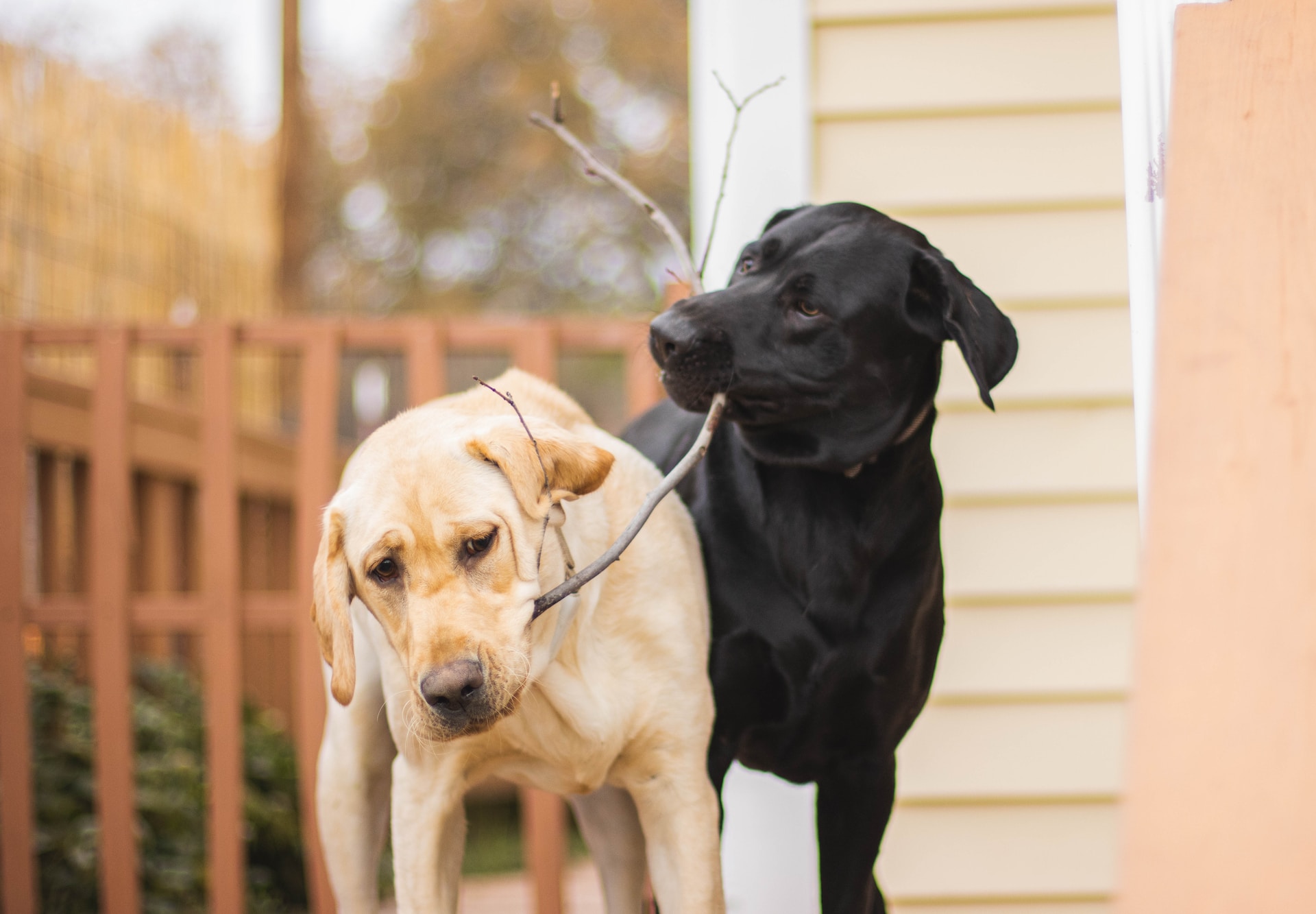If you have two female Labrador dogs that are constantly fighting, it can be a concerning and stressful situation. Understanding the underlying causes of their aggression is crucial in order to effectively stop the fighting. In this article, I’ll provide some helpful tips on how to prevent and manage fights between female Labrador dogs.
Firstly, it’s important to identify any triggers or situations that may be causing the conflict. This could include resource guarding, territorial behavior, or even hormonal changes during certain stages of their reproductive cycle. By recognizing these triggers, you can take proactive steps to avoid or minimize them.
One effective strategy is to establish clear boundaries and rules within your household. Dogs thrive on structure and consistency, so providing a predictable environment can help reduce tension between them. Ensure each dog has their own separate space for eating, sleeping, and resting to prevent competition for resources.
Additionally, proper socialization and training are essential for both dogs. Expose them to various environments, people, and other animals from a young age so they learn appropriate social skills. Consistent obedience training will also help establish your role as the pack leader and reinforce positive behaviors.
Why Do Female Dogs Fight?
Understanding the reasons behind female dog fights
Female dogs, like their male counterparts, can engage in aggressive behavior and fights for several reasons. It’s important for dog owners to understand these underlying causes in order to address and prevent conflicts between two female dogs.
One common reason for female dog fights is territorial aggression. Dogs are naturally territorial animals, and when two females are introduced into the same space, they may feel threatened or challenged by each other’s presence. This can lead to aggressive displays and ultimately escalate into physical fights.
Another factor that can contribute to fights between female dogs is social hierarchy. Just like in wolf packs, dogs establish a social structure within their group. When two females vie for dominance or a higher position within the pack, it can result in confrontations and aggression.
Additionally, resource guarding can trigger conflicts between female dogs. Resources such as food, toys, or even the attention of their owner can become sources of contention if one dog feels that her possessions are being threatened or taken away by the other.
Signs to look for when female dogs are about to fight
Being able to recognize early warning signs is crucial in preventing full-blown fights between female dogs. Some common indicators that tension is building include:
- Stiff body language: Dogs may hold their bodies rigidly with tense muscles.
- Raised fur along the back: This is known as “hackles” and is often a sign of arousal or aggression.
- Direct eye contact: Staring intensely at each other without breaking eye contact can be an indication of a potential conflict.
- Growling or snarling: Audible vocalizations serve as clear warnings that a fight may be imminent.
- Lunging or snapping: If one dog makes sudden forward movements towards the other while showing teeth or attempting to bite, it’s time to intervene before things escalate.

How to Stop 2 Female Dogs From Fighting
Preventing fights between female dogs requires proactive measures and responsible pet ownership. Here are some helpful tips to promote harmony:
- Proper socialization: Early exposure to other dogs and positive experiences can help reduce the chances of aggression later on. Gradually introduce your female dogs to new environments, people, and other animals in a controlled manner.
- Establish clear rules and boundaries: Consistency is key in setting expectations for both dogs. Teach them basic obedience commands such as “sit,” “stay,” and “leave it” to ensure they understand their place within the household hierarchy.
- Provide individual attention: Each dog should receive adequate one-on-one time with their owner to prevent jealousy or resource guarding behavior.
- Avoid triggering situations: Identify potential triggers that may cause tension between the females, such as high-value resources or confined spaces, and manage those situations accordingly.
- Seek professional help if necessary: If you’re struggling to manage aggression between your female dogs despite your best efforts, consult with a professional dog trainer or behaviorist who can provide guidance tailored to your specific situation.
Remember, when it comes to preventing fights between female dogs (or any canine conflict), early intervention is crucial. Addressing signs of aggression promptly can help maintain a peaceful coexistence within your furry family.